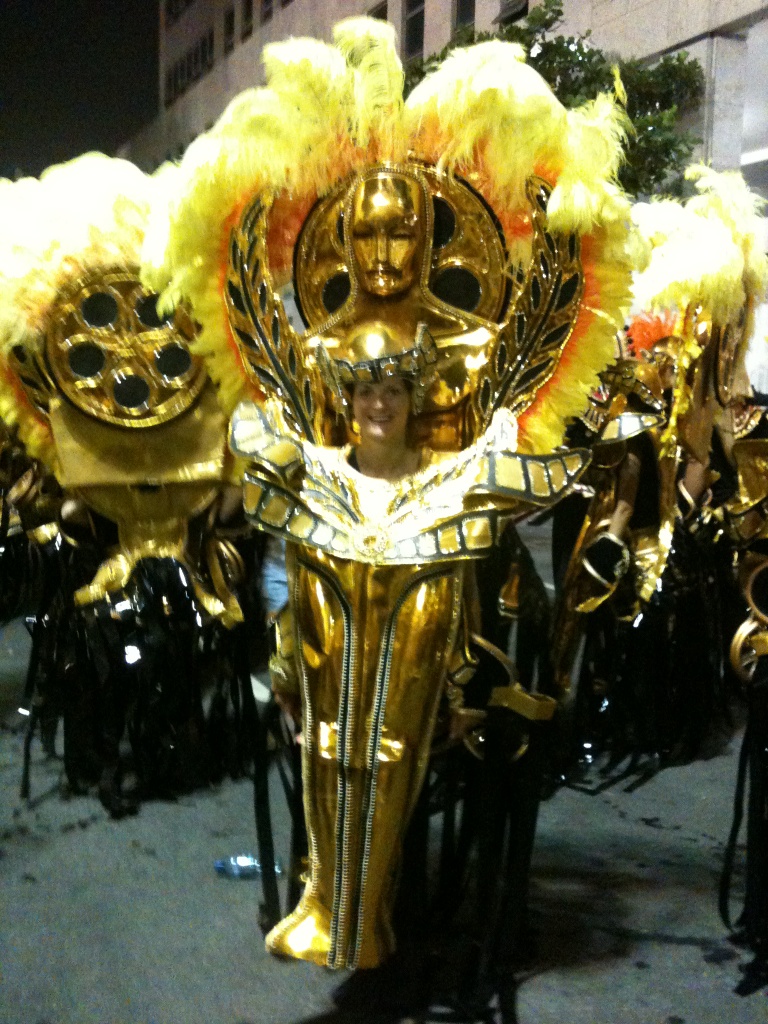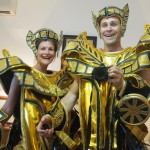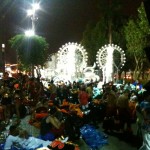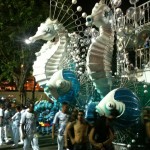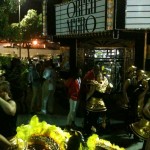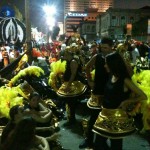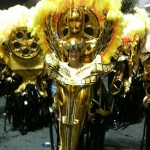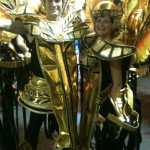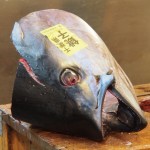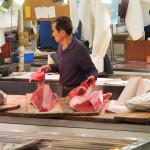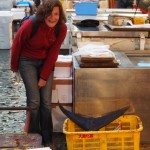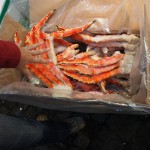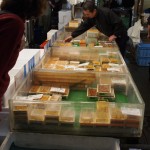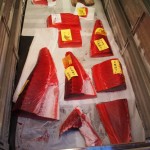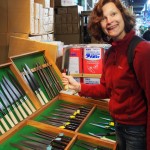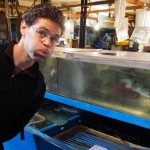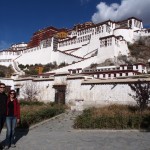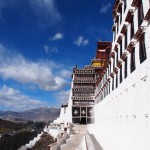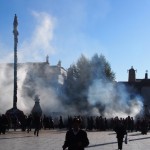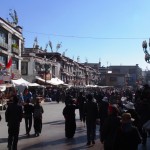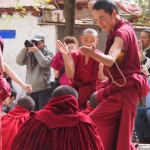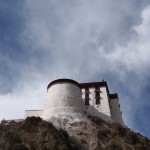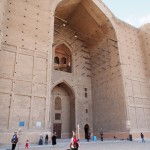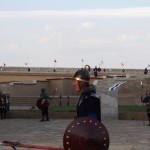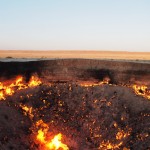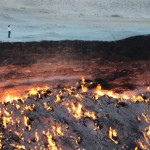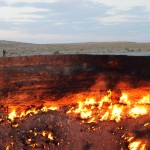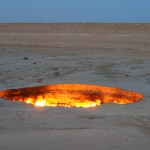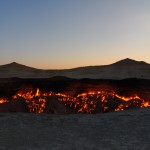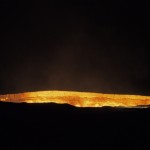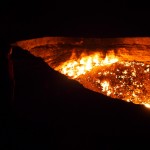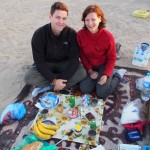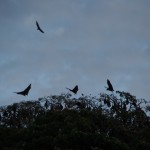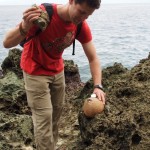As you can imagine, finishing our world trip has been pretty hard for us; strangely, I feel I have been avoiding finishing the blog because this will mean that Lucy and my journey of a lifetime is finally over.
We are now back in the UK and spring is now finally springing after bland weeks of snow, sleet, estate agents and personal admin. Everyone asks what it is like for us to be back “home” (as well as every single time asking us to name the best and the worst experiences of the trip – don’t worry, it doesn’t get dull, we just give different answers to everybody). In particular I remember a specific conversation from just after we got back: “Well, two weeks ago we were performing at Carnaval in Rio. And now we are in Ikea. In the rain. And to be honest it kinda sucks”.
Emotional aftermath aside, we can think of no better way to finish a Round the World trip than this: it is midnight in Rio de Janeiro, you are standing in a performing school of thousands of crazy excited strangers, surrounded by MASSIVE animated floats, troupes of dancers, glitter, costumes and more marabou feathers than you can shake a stick at (and that is a LOT). The monumental drum section starts, the overamped Samba music cranks up, haphazard but huge fireworks go off announcing the entrance of your school (fireworks!), and you shuffle forwards as part of this good-sized army, receiving frantic shouted instructions in incomprehensible Portuguese from marshals and coaches alike, before turning the corner into the Sambadrome and seeing … banks upon banks of people, crowds of 90,000 cheering, screaming spectators all hyped up on cachaca and adrenaline. They are all looking at you expectantly. And off you go.
- Yes, we formally joined a Rio Samba School for the performance (the Uniao da Ilha school for completists among you). Yes, this is actually possible.
- Yes, we learned a two verse, two chorus Samba song about the life and times of the Poet Vincius. In Portuguese. Which neither of us speak. Syllable by phonetic syllable. Bloody hell.
- Yes, we picked up two monstrously awesome costumes from the samba school headquarters, and ended up looking like the picture below:
- Yes we fought our way through Rio samba rush hour on the subway to find the marshalling point on a random side street in an unfamiliar Rio suburb.
- Yes, we may have had a few drinks by this point.
On our travels I have sadly discovered that I am no Patrick Leigh-Fermor. My prose may be pretty purple at times, but trying to describe utterly overwhelming experiences head on is well beyond my meager writing talents. Hence I tend to default to a series of vignettes to try to convey the thrust of the thing:
- Struggling through the Rio subway crowds at night in a wildly impractical costume made of marabou feathers, glitter and flimsy golden plastic. Finding your place in a morass of people looking like amped up burning man cast offs. The waiting. The confusion. The navigating your way to and from the toilets by the temporary landmarks – turn left at the 20 foot tall seafood platter, head past the greek amphora mime artist troupe and aim for the back of the cinema on wheels
- The heat, the noise, the shuffling, shambolic, dazzling nature of it all. The mass hysteria sweeping you along. The jury-rigged / jerry-built costumes gradually starting to fall apart as the glue from the heat guns begins to give way. The trails of beads, glitter, feathers and fabric left in our wake to be cleared up by samba-dancing crews of street sweepers
- Wild dancing at midnight in a heavy plastic suit of armour in the crippling steamy humidity. The cold and clinical calculation that you run through, wondering whether you can physically make it to the end of the Sambadrome without passing out from dehydration, exhaustion and heatstroke. The second wind (and the third, and the fourth, and now the fifth!) as the gargantuan crowd screamingly urges you on
- Wiping my streaming brow with my sleeve, before coming to a belated realization that I had used someone else’s sleeve (he was in the audience; he was leaning kinda close; I thought it was funny at the time)
- Water, blessed water, at the end of the run. Handed out in these individual cup-sized, hermetically sealed packets. Lucy struggling to open hers – her fingers had given out rather after the effort of lugging the weight of her costume all the way across town. I ended up grabbing a gold plastic helmet-full of them, and opening them for her like Popeye opening cans of spinach – fist, crush, crunch, swallow. Fist, crush, crunch, swallow…
- Delighted, exhausted collapse in a hotel room afterwards, huge piles of sweaty nylon costumes, bloody chafe marks on your shoulders from the weight of the headdress support frame, eating the world’s largest ham sandwiches and drinking pints and pints of mineral water while you watch your competing samba schools on national TV
- Seeing the judge’s scores go up afterwards, and being proud of your adopted school for acquitting itself well after a recent promotion to the top flight (a little like the premier league). On reflection, it is the closest I can imagine to being in an army in battle – your massive effort and heartfelt contribution made almost no difference to the overall performance, yet what would it have been without thousands of you?
- Lunch at tea time on the waterfront the next day after eight hours of sleep and a very late rise. Trying to listen to your body and order appropriately while it sends out a kaleidoscopic series of cravings – salt, sugar, water, caffeine, chips, mayonnaise, cachaca, savoury, water, salt…
And the end result? Well, this is our school’s section of video, taken from Brazilian national TV (our little golden group appears behind the oversized greek amphora / moving cinema around the 37 minute & 53 second mark)…
And the samba song? Ah, the samba song. Uniao Da Ilha, 2013. Thirty lines of random Portuguese regarding the life and times of the poet Vincius (the theme for the school that year). Heavily crammed into our heads during a succession of flights, in a succession of hotel rooms and, memorably, in one Rio beachfront bar where our song came on the radio and the two crazy foreigners stood up and sang it all the way through to a deeply bemused collection of waiters and other early diners. And no, neither of us particularly likes samba music. Those of you familiar with the concept of an “earworm” will therefore sympathize with our mood after a few days of having this bloody song going round and round our heads. Lucy in particular had one particularly bad experience after an unfortunate bout of undercooked-fish-inspired food poisoning, where she was up all night in the bathroom with the song on constant, unavoidable repeat in her brain. The only way I could think of to get the bloody tune out of our consciousnesses was to replace it with something even more catchy – cue wall to wall youtube repeats of Taylor Swift’s We are Never Ever Ever Getting Back Together and a relatively swift descent into teenage singalong insanity. God help us both.
I don’t know how many of you will have made it this far – this post seems to have rambled on a little. Would we do Carnaval again? Would we take friends next year? Well:
- Flights to Rio? Not too pricey given we were already in South America, and we airmilesed most of the rest of the trip home via Bogota and New York
- Hotel for carnaval? Expensive – prices shoot up for that week and there are sometimes five day minimum stays
- Joining a samba school? Again, expensive at about $500 a head, but actually surprisingly easy if you know how and plan ahead
- Learning a Samba song? Costly in terms of sanity, but fundamentally something that you can just throw time and effort at
- The overall experience? Well, we have had a fair few, but this… This was utterly, utterly priceless
- So how exactly are we meant to wear these?
- In our room getting ready to go – minus the huge, heavy headdresses
- Arriving at the warm up area – head for the 20 foot high seafood…
- …turn left at the pregnant seahorses…
- …and finally aim for the back of the cinema on wheels
- Find your crew and settle in for a long wait
- Lucy, looking pretty damned fabulous in her costume
- One world trip later, the happy couple

